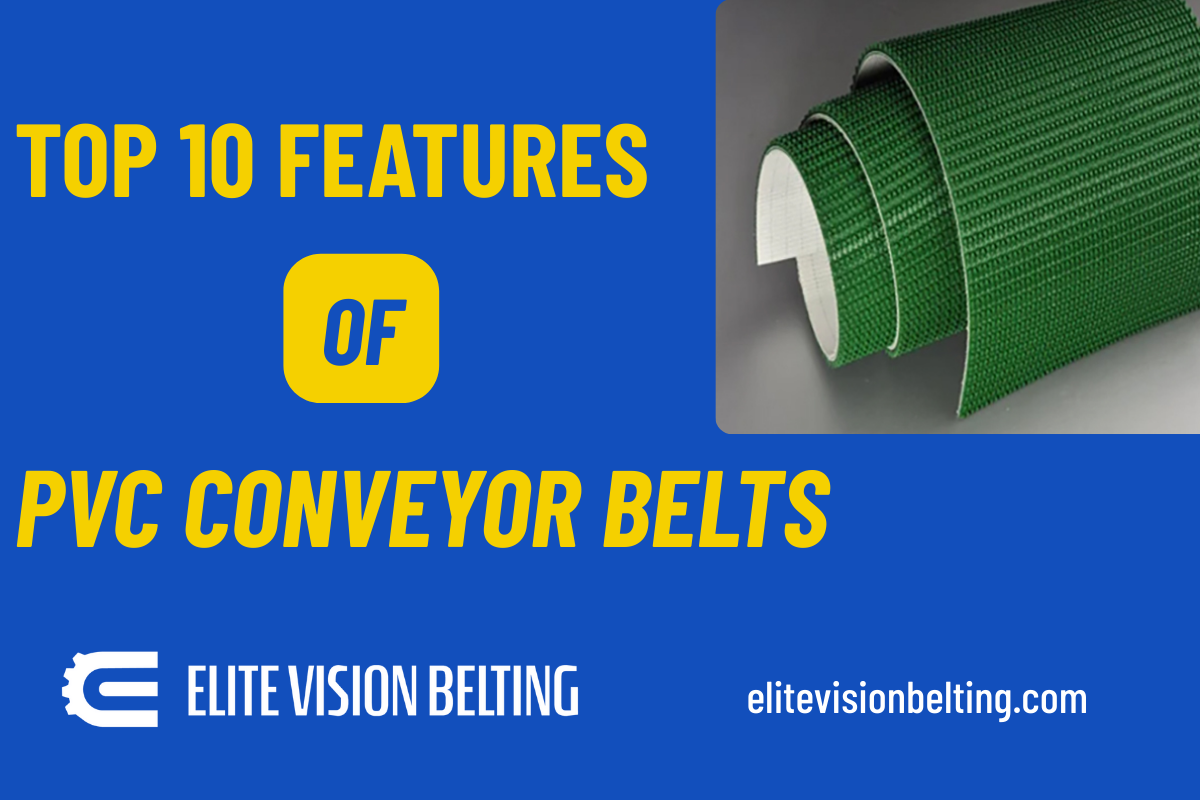Introduction
Choosing the right conveyor belt is significant for defensive efficiency, promising durability including decreasing operating expenses. Rubber and PVC conveyor belts are two of the most popular kinds of conveyor belts. Yet, their uses vary based on the sector, kind of material, and operating environment. Using the incorrect conveyor belt choice can result in inefficiency, frequent malfunctions, and wasteful maintenance costs.
PVC conveyor belt are right for sectors that contain food processing, medicines, and manufacturing because they are inexpensive, lightweight, and moisture-resistant. Rubber belts, on the other side, are best for large-scale material management, building, and mining as they are made for heavy-duty uses and are adept at handling harsh materials and high heat. Industries can select the best choice for their distinctive requirements by being aware of the differences between PVC and rubber conveyor belts.
PVC Conveyor Belts
PVC conveyor belts are low-priced, transportable as well as flexible because they are made of synthetic plastic polymer. These types of belts are frequently created in sectors those necessity conveyor systems that are hygienic, moisture-resistant, and quite easy to clean. PVC conveyor belts' cost is one of their key advantages. However they are lighter than rubber belts, they are ordinarily less expensive and use less energy to operate.
PVC conveyor belts are supportive of industries like packing, medicine as well and food industrialized. They are seamless for carrying consumables because they follow FDA and EU food hygiene rules. Moreover, their smooth texture protects against impurities and bacterial growth, ensuring obedience to hygienic principles. The ability of these materials to withstand chemicals and moisture is an additional important benefit that succeeds them for uses linking contact with thinners, oils, or water. As PVC cannot engage moisture as rubber belts do, mold would not grow and it will last longer.
Another advantage of selecting PVC conveyor belts is maintenance. Due to their porous nature surface, cleaning is simple and reduces maintenance expenses and interruption. They are simpler to set up and replace when required given that they do not have as stiff or thick as rubber belts. Yet, since they are more likely to deteriorate over time, they could prove to be appropriate for applications with heavy use involving high loads and materials that are abrasive.
Rubber Conveyor Belts
Due to their power and flexibility, rubber conveyor belts are capable of surviving dangerous temperatures, abrasive materials as well as heavy loads. Rubber conveyor belts are of high quality for sectors including bulk material management, steel manufacture, mining, and building given that they are far more long-lasting and resilient than PVC conveyor belts.
Rubber conveyor belts' outstanding tensile strength enables them to move large loads without deforming, which represents one of its main benefits. These belts are suitable for handling things like rocks, coal, metal parts, and various other heavy objects as they are both frictional and impact-resistant. Furthermore, rubber conveyor belts of there are many kinds that give durability to heat, fire, and oil perform well in harsh conditions. They are therefore appropriate for sectors that deal with exposure to chemicals, extreme temperatures as well as dangerous situations.
Rubber conveyor belts also have the additional advantage of having traction and grip that keep materials from rolling when being transported. This characteristic is especially significant in sectors where effectiveness and stability are essential. Yet since rubber conveyor belts are susceptible to wear, breaking down and misaligned over the years, they need more frequent evaluations and upkeep than PVC conveyor belts. Additionally, because they are greater in weight, they need greater amounts of energy to run which increases energy expenses. For companies that handle heavy workloads, their longevity represents a long-term investment regardless of these disadvantages.
Which One to Choose?
The particular needs of your company will ultimately decide whether to use rubber or PVC conveyor belts. For lightweight uses, sanitary settings, and economical solutions, PVC conveyor belts are suitable. They are appropriate for sectors including food manufacturing and packaging, medicines, including retail logistics that need to be resistant to chemicals and moisture. These types of belts are a sensible option for organizations that value efficiency and hygiene due to they are also easy to maintain as well as easy to clean.
On the contrary, rubber conveyor belts have been constructed to cope with harsh conditions, and heavy usage, including usage over time. They work well in businesses where scrape, influence along with high temperatures are regular difficulties, such as mining, construction, agriculture as well as industrial manufacture. Rubber conveyor belts can be more expensive and essential for regular upkeep but they are an outstanding investment for businesses with high working demands as their higher durable and long-term reliable.
PVC is a greater choice if affordability and ease of management are your top worries. But, rubber is the finest option if your firm working with harsh materials and tough situations.
Conclusion
Selecting a suitable conveyor belt is important for both durability and proficiency. PVC conveyor belts are affordable, transportable, and moisture-resistant, building them flawlessly for packaging, food, and medications. Rubber conveyor belts are best for heavy sectors like building and mining because they are durable, tough, and heat resilient. Elite Vision Belting, Conveyor Belts provides expert leadership to support you in choosing the best course of action.

.png)
.png)

.jpg)
